What Does Cottage Cheese Taste Like?
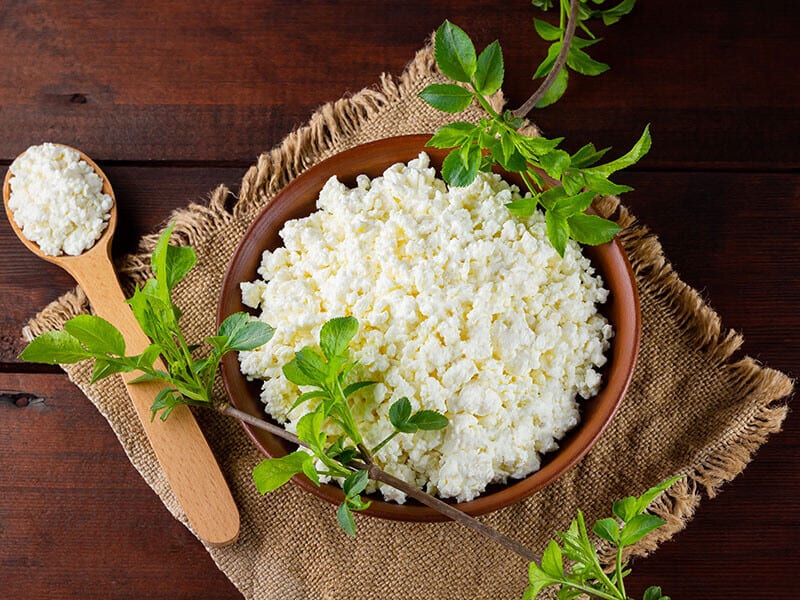
What does cottage cheese taste like? When it comes to cottage cheese, many people will turn their thumb down since they are often offended by its smell. However, this cheese does not deserve such denials. Cottage cheese’s taste is unique, like the way it is made.
If you are freaking out with the idea of trying the cheese that most people refuse, this post will change your mind. Cottage cheese is one of the most healthy foods ever you can add to your diet.
In this post, I will clarify all the stereotypes you hear from your friends. Check out right away to have the answer!
Cottage Cheese – The Underrated Gem In The Culinary World
Before you get to know more about cottage cheese flavor, let’s take a quick look at the short information below. It will help you to know more about this controversial cheese.
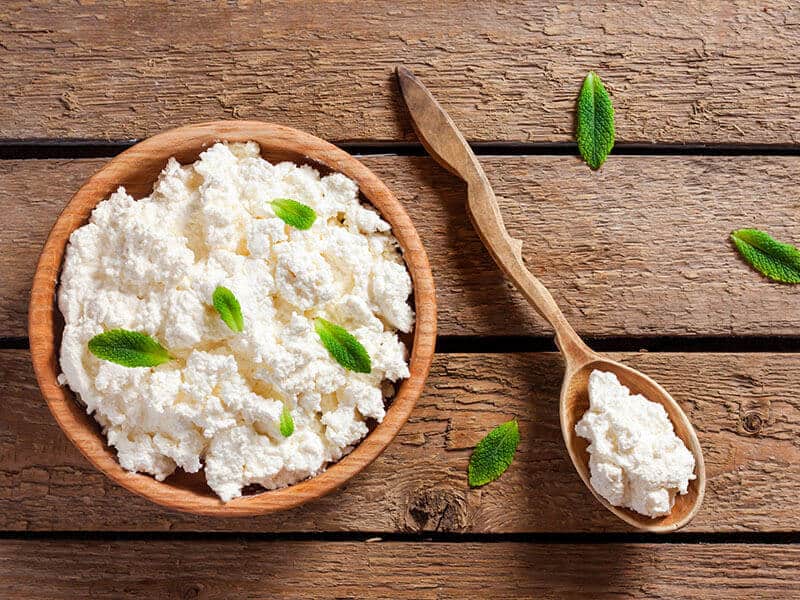
1. What Is Cottage Cheese?
“Cottage cheese” first appeared in the United States between the 19th century as a term to indicate simple homemade cheese. Although no one can tell for certain the origin of cottage cheese, the fact remains the same that this cheese is popular nowadays.
In fact, cottage cheese is categorized into the fresh cheese family, which the production happens through the milk acidifying process. By adding “rennin” – a milk clotting acid proteinase, the milk will be coagulated into curds.
After the curds are formed, instead of pressing them to achieve a silky cheese block, people will only wash and drain them to remove the acidic content, leaving the sweetness inside. In the latest, other ingredients, like cream, salt, and starch, are added to enrich the flavor.
Plus, cottage cheese is very low in calories. Unlike other kinds of cheeses, its flavor is created without any aging or ripening process.
Curious about cottage cheese history? This video can help!
2. Cottage Cheese Can Be Made Into Many Dishes
If you think that cottage cheese is limited in its uses, you are totally wrong. Like many other kinds of cheese, cottage cheese shows its values through various culinary applications. It is added into sauces, mixed with jams and fruits.
Surprisingly, cottage cheese is also one of the wonderful ingredients to make various kinds of desserts. People worldwide turn this cheese into mouth-watering biscuits, ice cream, parfaits, or even smoothies!
Not only that, but this cheese is also used to replace mayonnaise in tuna salad, alternate for meat due to its high protein content. Sometimes, you will find it is served separately as a savory and nutritious breakfast or snack with a ton of topping ideas.
3. What You Are Not Told About Cottage Cheese
Cottage cheese is more interesting than you ever thought. Now, I think you may want to take a quick look at some interesting facts about it.
- It is also believed that “cottage cheese” here may mean “cheese for the poor” since it is found to be popular in “cottage” – a small country residence where people use “old milk” (the leftover liquids after churning butter) to make their cottage cheese.
- Cottage cheese is a favorite staple food of American President Richard Nixon. He often ate it for breakfast or lunch. And it is said that the last meal he enjoyed as president was a bowl of cottage cheese.
- The fat content in cottage cheese is much lower compared to other cheeses. Therefore, it is one of the favorite foods highly evaluated by nutritionists and athletes.
- In the past, rennin did not participate in the cottage cheese making process. Rather, Mesophilic lactic acid bacteria was added to coagulate milk.
However, with the development of the cheese industry, rennin was added to speed up the milk coagulation process.
After Tasting: What Does Cottage Cheese Taste Like?
In spite of its popularity, the taste of cottage cheese still remains controversial in the culinary world. While many people are continuously falling in love with it, others try to find a way to escape from it. So, what does cottage cheese actually taste like?
Let’s scroll down to get the most detailed analysis of this cheese flavor profile!
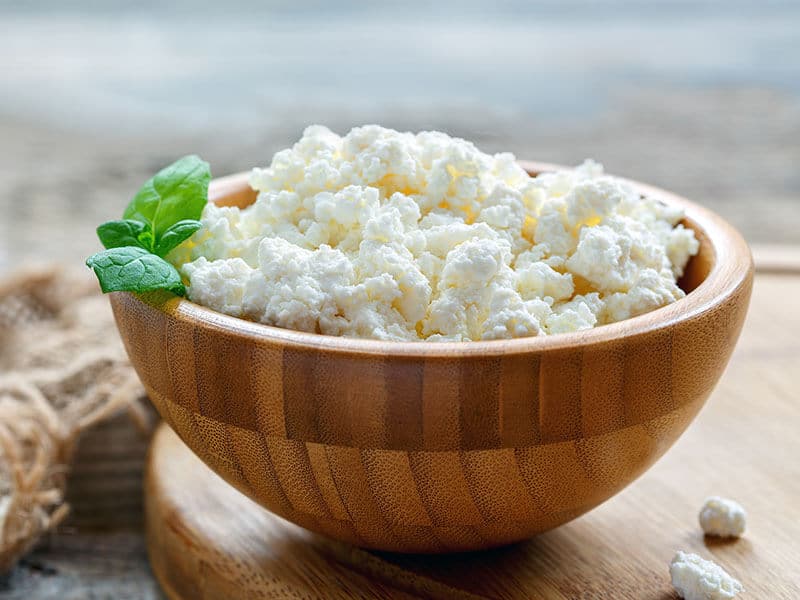
1. Cottage Cheese Flavor: Fat Content Decides All
The first thing you need to know is the low-fat content in cottage cheese, resulting in a very light milky taste. It is a fact that cottage cheese flavor depends much on the fat content inside. The higher fat content it holds, the milkier taste it possesses.
In other words, if the cottage cheese you eat is low in fat, you may find that your cheese is more sour (almost like sour cream) and unpleasant to eat. The creamiest cottage cheese has 4% of fat content. If you are a newbie to this cheese, pick it for a better experience.
Do you remember the thing I have mentioned about? Due to many other additive ingredients at the end, cottage cheese will taste different too!
In particular, most of the cottage cheese you find in the market will have a noticeable salty flavor, while some others would rather have a note of creamy inside.
2. How Can You Tell About Cottage Cheese’s Smell?
I’m sure you have not only once heard cottage cheese haters complain about the bad smell (they thought) of cottage cheese, right? Yes. I have the same opinions as them. Compared to other kinds of cheeses, cottage cheese smell tends to be not as fragrant.
It gives off a pungent and an intense sour smell, which is said to be like the smell of “spoiled milk,” especially when it has a low level of fat. That being said, the low-fat cottage cheese seems easier to offend you than the one with a higher fat level.
3. Texture: Different From All Cheeses You Know
Cottage cheese texture is quite more special than other cheeses. In particular, it has a semi-solid, creamy, almost clumpy texture that upsets many people. This is because when cottage cheese is made, cottage cheese is only drained but not pressed.
As a result, the whey protein is not totally separated from the curd protein, which also make cottage cheese’s texture seems to be moister and creamier than other cheeses.
However, you should note that the texture of the cottage cheese will also depend on the dressings they wear as well.
For example, you may experience a crumbly and non-homogenous texture in case you eat the cheese right after the curds are washed. In contrast, cottage cheese will taste smoother and creamier since the dressings (cream, salt, and starch) are presented.
Is cottage cheese as bad as you have ever thought?
What Can You Achieve From Eating Cottage Cheese?
Cottage cheese is known as the healthiest cheese. It’s often recommended to add to the athletes’ diets because it’s very low in fat and calories. But did you know that it also offers many other health benefits?
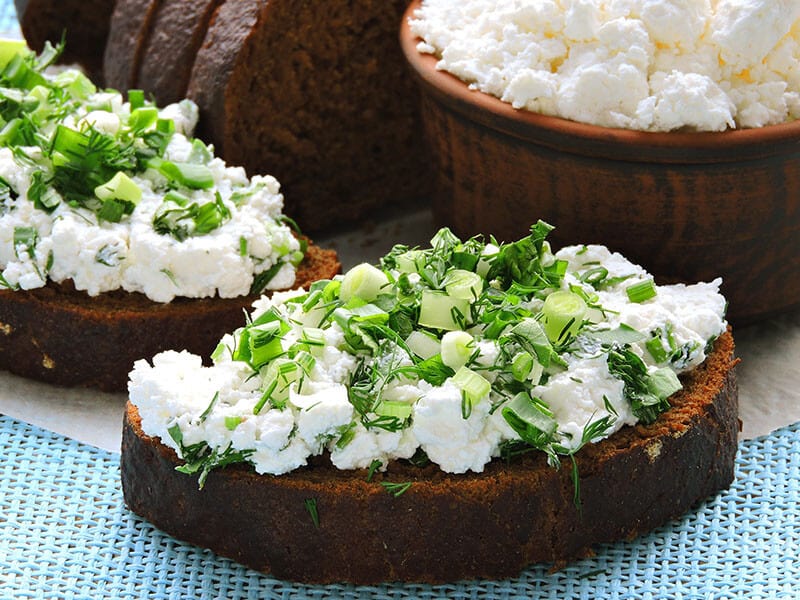
1. Losing Weight With Cottage Cheese
If you’re on a diet with the support from the nutritionists, you will see that the menu they recommend usually contains cottage cheese. It’s because cottage cheese is also incredibly rich in protein and calcium – the nutrients proven to be effective in weight loss.(1), (2)
2. It Helps You In Gaining Muscle
As I mentioned above, cottage cheese is an ideal food option that is prioritized in athletes’ diets since 100g of this cheese contains 11.1g of protein (accounts for 1/4 women’s DRI and 1/5 men’s DRI) according to the FDA FoodData Central report.(3)
Studies have found that (casein) protein is one of the key factors that help to build muscles and prevent muscle breakdown.(4), (5)
3. Other Potential Benefits You Can Receive
Besides the two above, many pieces of research have also found out other health benefits of cottage cheese. In particular, it helps to fight against cancer by providing a rich source of Calcium and vitamin D.
Furthermore, cottage cheese is good for pregnant women, helps to regulate blood sugar, and improves the digestive system, etc.(6)
Homemade cottage cheese? Come on, this is a package of nutrients!
Storing Cottage Cheese: 3 Useful Tips To Keep It Last Long
Cottage cheese needs to be treated more carefully than any other kind of cheese. Due to a moister texture, this cheese does not have the average shelf life as some of its cousins. Check these tips in this part to get useful tips in storing your cottage cheese.
1. Two Hours Maximum At Room Temperature
Once you open your cottage cheese package, it is necessary that you should eat all of the cheese within 2 hours. Since the bacteria grow rapidly at room temperature, throw your opened cottage cheese, or you may end up with stomach aches and diarrhea.
2. Fridge Is Always A Should-Have Item
Although you may see the ” sell-by date” on the label of the package, you can still keep your cottage cheese for a couple of days more in case it is unopened. However, for opened cottage cheese, you should store it in your fridge and consume within 5-7 days maximum.
Note: Transfer your cheese to an airtight jar or cover it with aluminum foil for better quality.
3. You Can Store Your Cheese In The Freezer
You are wondering whether you can put cottage cheese in the freezer?
Yes, absolutely! Like many other products, cottage cheese will last longer in the freezer than at room temperature or in the fridge. If stored properly, you can have your cottage cheese for 2-3 months without going for another purchase.
Note: Don’t forget to defrost it before using it. Unless, your cheese may taste sourer as the result of lactic acid bacteria reaction.
How To Tell If Your Cottage Cheese Is Bad?

Everything can go bad. So does your cottage cheese. In this section, I will teach you how to distinguish the signs that indicate bad and spoiled cottage cheese.
Check Out The Smell
Checking the smell of cottage cheese can be a bit challenging since this cheese naturally has a sour and maybe spoiled-milk-like smell. Let’s ask for the help of your delicate olfactory sense. See whether your cheese makes you uncomfortable.
It smells damp? Well, consider putting it in your trash.
The Texture Can Tell You Know
When your cottage cheese is going to go bad, its texture will become discrete. You can see that there is a water layer floating on the surface of the curds, while the curds become very sticky and chewy instead of soft and creamy.
Appearance Is The Best Indication
The most simple sign you can easily figure out when your cheese turns bad is its appearance. Specifically, let’s look at your cottage cheese color. If it turns yellow instead of normal white, don’t let them stay at your house any longer.
What Happens If You Eat Bad Cottage Cheese?
Well, once you discover that your cottage cheese has gone bad, discard it immediately. Eating bad or spoiled cottage cheese can cause food poisoning since harmful bacteria are starting to develop.
Symptoms include: vomiting, abdominal pain, diarrhea, stomach cramps, dizziness, and fever. If they cannot be treated on time, it may lead to more serious conditions.
Eating Right: 5 Ways To Have The Best Taste Of Cottage Cheese
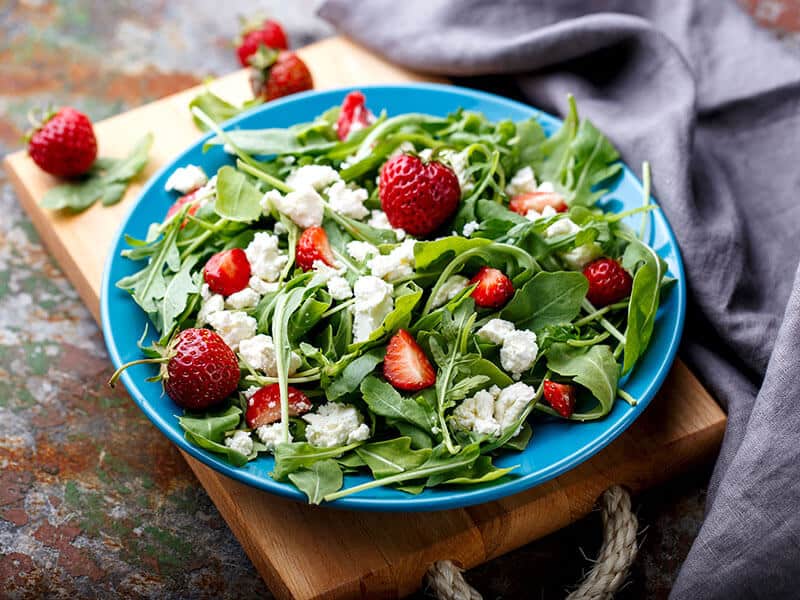
Here, I will give you some suggestions about which dishes can go well with cottage cheese. Don’t skip out on this part. I believe it can be very helpful.
- Toast: This is always my Monday first pick. I love the way the light milky flavor of cottage cheese blends into the crispy texture of my toast. In addition, it is also really quick to prepare. Three minutes is enough for some delicious and aromatic toast!
- Salads: Having cottage cheese on hand is lucky when you suddenly find that you have run out of mayonnaise or vinegar. Cottage cheese can also do a good job since it can be used to make salad dressings.
- Cakes and pastries: Like other cheeses, cottage cheese can be used as an ingredient in your cake or pastry recipes. You will never get bored with taste as it is so comforting and satisfying.
- Smoothies: People sometimes may be doubted about adding cheese into their drink. Don’t worry; cottage cheese works especially well in smoothies. And remember: Fruits are a companion too.
- Pasta: Use cottage cheese to make a sauce for your pasta. It is not as bad as you think. With the creamy consistency and low-fat content, you will not feel heaviness after finishing the plate.
Cooking With Cottage Cheese: 4 Recipes
Tada! These 4 recipes below are amazing! They are my top-thinking option when someone asks me about cottage cheese. And yes, I believe you are too. Once you try, you will want to have them for a lifetime!
1. Cottage Cheese Breakfast Bowl
Let’s start a new energetic day with a healthy, satisfying and refreshing cottage cheese bowl. This delicacy is a reunion of the most nutritious ingredients. Add your favorite vegetables, fruits, and nuts on top of cottage cheese, then enjoy them!
2. Cottage Cheese Pancakes
My kids extremely love this treat. All you need to do is take a decent amount of cottage cheese and mix it with other ingredients. Serve your pancake with some jams and honey or fruits. It will make the taste even better.
3. Cottage Cheese Smoothie
Who said cheese upsets smoothies? Look at this recipe. Obviously, these stereotypes are proven to be completely wrong! My favorite is the raspberry peach cottage cheese smoothie. The combination of creaminess, juiciness, sweetness, and sourness is about perfect!
Make this creamy and nutritious cottage cheese for your child! You can see this video to know more:
4. Cottage Cheese Cheesecake
Instead of sticking to other famous cheeses, give cottage cheese a chance. You hate its clumpy texture? Don’t hurry to get away. The cottage cheese will be put into the food processor and blended until it becomes a smooth mixture.
Along with the fragrant smell from the cake flour, cottage cheesecake is worth a try.
FAQs
I know some of you might still not get your problem solved. These frequently asked questions I put here can help. And it will not waste so much of your time.
Cottage Cheese Is Not As Bad As You Thought!
Cottage cheese is rated as one of the healthiest milk products in the world. Although the flavor is not its advantages, cottage cheese can absolutely win your heart because of the nutrients values it offers. If you are on a diet, don’t hesitate to pick up this cheese.
It is said that half of the people hate cottage cheese, and the other half love it. And you might be one in the latter. Who knows! Now, don’t forget to leave your opinion below. I really expect that this post can be helpful for you.
I’m waiting here to look for your replies!

References
- Ostrowska, L., Stefańska, E., Jastrzebska, M., Adamska, E., Wujek, A., & Waszczeniuk, M. (2012).
- Zemel, M. B. (2003). Role of dietary calcium and dairy products in modulating adiposity. Lipids, 38(2), 139-146.
- Cheese, cottage, creamed, large or small curd – FoodData Central Search Results. 2021.
- Kanda, A., Nakayama, K., Sanbongi, C., Nagata, M., Ikegami, S., & Itoh, H. (2016). Effects of whey, caseinate, or milk protein ingestion on muscle protein synthesis after exercise. Nutrients, 8(6), 339.
- Reitelseder, S., Agergaard, J., Doessing, S., Helmark, I. C., Lund, P., Kristensen, N. B., … & Holm, L. (2011).
- Meenakshi Nagdeve. 15 Surprising Benefits of Cottage Cheese – Organic Facts. 2021.
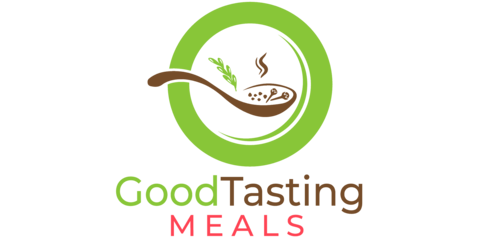

Liam O’Brien
Founder & Recipe Developer
Expertise
Education
Dublin Institute of Technology (now Technological University Dublin)
Ballymaloe Cookery School, County Cork, Ireland
Liam O’Brien is the co-founder and kitchen soul behind Good Tasting Meals, a chef who believes that cooking shouldn’t feel stressful or complicated.
He earned his culinary stripes at Technological University Dublin and polished his farm-to-table skills at Ballymaloe Cookery School. With over 15 years flipping pans and stirring up stories, Liam has worked in family cafés, bustling bistros, and everything in between.
At Good Tasting Meals, Liam brings you recipes that feel like home: cozy, simple, and full of flavor.